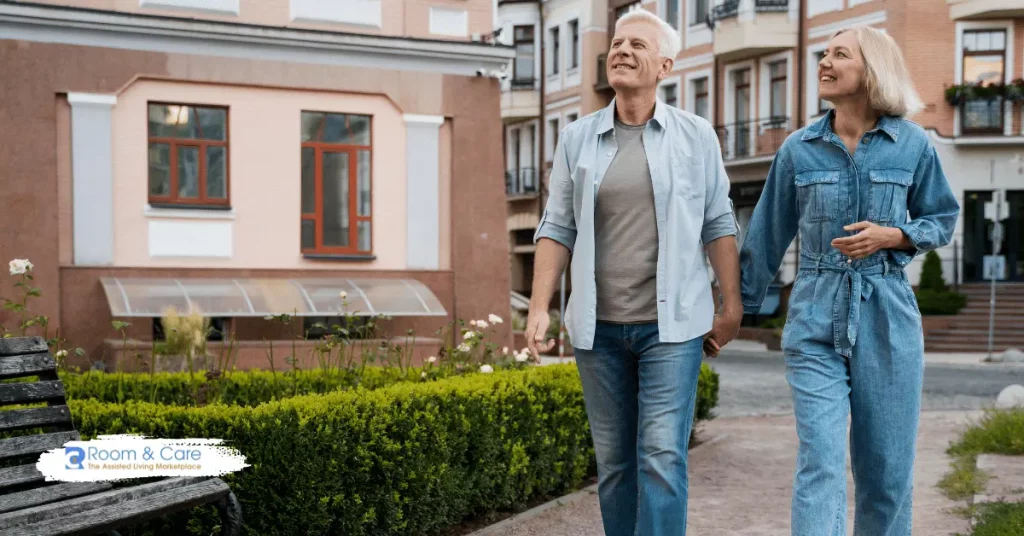

As the senior population grows, finding affordable senior living apartments has become an essential concern for many families. Seniors seek housing options that cater to their needs without straining their finances. Whether you’re looking for a safe, comfortable, and affordable place for yourself or helping a loved one transition to a more manageable living environment, it’s important to understand all the available options.
This comprehensive guide will help you explore what affordable senior living apartments are, the types of communities available, the key factors to consider when making your decision, and tips for finding the best affordable senior living arrangements. From independent living communities to assisted living facilities and adult family homes, we’ll cover everything you need to know to make an informed choice.
Affordable senior living apartments refer to housing designed for seniors, typically those aged 55 or older, that offers a blend of cost-effective living and essential services. These apartments are often part of a larger community that caters specifically to seniors’ needs, providing access to amenities, social activities, and, in some cases, support services such as transportation and housekeeping.
The term “affordable” can be subjective, but generally, these apartments are designed to fit within a fixed budget while still providing a high quality of life. Depending on location and the type of community, costs can vary significantly, but there are several options available for seniors seeking both affordability and comfort.
Affordable senior living apartments can take many forms. While some seniors may need little to no assistance, others may require varying levels of care. Understanding the different types of senior living communities will help you determine which option is right for your specific situation.
Independent living communities are perfect for seniors who can still manage most of their daily activities but want the convenience and security of a community setting. In these communities, residents typically live in apartment-style homes and have access to various amenities such as fitness centers, dining facilities, and organized social activities.
Independent living communities do not offer medical care or daily assistance with personal activities, making them one of the most affordable options in senior housing. However, they often provide housekeeping, transportation, and meal services, which are included in the overall cost or can be added as needed.
What to Look for in Independent Living Communities:
Assisted living facilities are designed for seniors who require help with daily activities but still want to maintain a level of independence. These facilities provide assistance with personal care tasks such as bathing, dressing, and medication management, while offering social and recreational activities to keep residents engaged.
Although assisted living facilities are more costly than independent living communities, there are still affordable options available, particularly in areas where Medicaid waivers can be used to cover some of the costs. This type of housing is ideal for seniors who need a little extra help but don’t require the full-time medical care provided by nursing homes.
Key Considerations for Assisted Living Facilities:
Adult family homes (also known as adult foster homes or residential care homes) offer a more intimate, home-like setting for seniors. These homes typically house a small number of residents, which allows for personalized care and attention. Adult family homes often provide assistance with daily activities, medication management, and meals.
One of the main advantages of adult family homes is their affordability compared to larger assisted living facilities. Because these homes are smaller, they tend to have lower overhead costs, which translates to more affordable care for residents. Additionally, many adult family homes accept Medicaid, further reducing costs for qualifying seniors.
Why Consider Adult Family Homes:
Memory care communities are specifically designed for seniors with Alzheimer’s disease or other forms of dementia. These facilities provide 24/7 supervision and specialized care to ensure the safety and well-being of residents. Memory care communities typically offer structured routines, secure environments, and activities designed to stimulate cognitive function.
While memory care can be one of the more expensive senior living options, there are ways to find affordable memory care facilities. Some larger senior living communities offer memory care as part of a continuum of care, allowing residents to transition from independent living or assisted living to memory care without moving to a new facility.
Important Factors in Choosing a Memory Care Community:

When searching for affordable senior living apartments, it’s essential to look beyond just the cost. Consider the community’s services, amenities, location, and future care options to ensure you or your loved one will feel comfortable and supported.
One of the most important factors when choosing senior living is the location. Ideally, the apartment should be located near family members or close to essential services like medical facilities and grocery stores. In some cases, choosing a community slightly farther from urban centers can reduce costs, making it easier to find affordable senior living apartments.
Proximity to Family: Seniors who live closer to family members tend to have better emotional support and access to assistance when needed. It also makes it easier for family members to visit regularly, ensuring a stronger support system.
Even in affordable senior living apartments, many communities offer access to essential services that can make life easier for seniors. These services may include housekeeping, transportation, meal plans, and access to healthcare professionals. While some services may be included in the cost of rent, others may come with an additional fee, so it’s important to clarify what’s included.
Key On-Site Services to Consider:
Affordability is a top concern for many seniors and their families. When evaluating senior living apartments, it’s essential to understand the full cost structure, including rent, additional services, and any potential fees for amenities. Fortunately, many financial assistance programs are available to help make senior housing more affordable.
Government Assistance Programs: Seniors may qualify for programs like Medicaid, which can help cover the costs of care in assisted living facilities or adult family homes. Additionally, HUD’s Section 202 program provides subsidized housing for low-income seniors, offering rent assistance for qualifying individuals.
As seniors age, their healthcare needs may change. Choosing a senior living community that offers a continuum of care can save time, money, and stress in the long run. A community with a continuum of care allows seniors to transition from independent living to assisted living or memory care without moving to a new facility. This can be both more affordable and more convenient than finding a new community later on.
Benefits of Continuum of Care:
One of the significant advantages of senior living apartments is the sense of community they provide. Loneliness and isolation are common concerns for seniors, and being part of a community with regular social activities and engagement opportunities can significantly improve quality of life.
When evaluating a senior living community, consider the types of social and recreational activities available. Does the community offer fitness programs, hobby groups, or cultural outings? Social interaction plays a crucial role in mental and emotional well-being, so it’s important to choose a community that fosters an active and engaging environment.
Social Activities to Look For:
Finding affordable senior living apartments may feel overwhelming, but there are several strategies you can use to simplify the process and find the best fit for your needs.
The sooner you begin your search, the more options you’ll have. Starting early allows you to take the time to explore multiple communities, compare pricing and services, and get a sense of the culture and environment at each location.
Many local organizations and non-profits provide assistance in finding affordable senior housing. Senior centers, local housing authorities, and aging councils often have resources that can help you navigate the senior living market.
Several government programs are designed to help seniors afford the cost of housing. For example, Medicaid waivers can help cover the cost of personal care in some senior living facilities, while HUD’s Section 202 program provides rent subsidies for low-income seniors.
Don’t settle on the first community you visit. Take the time to visit multiple locations, ask questions, and compare the pricing structures. Some communities may offer discounts for long-term leases or seasonal specials, so it’s worth exploring all available options.
Many online resources, such as senior housing websites, offer search tools to help you find affordable senior living apartments. Websites that list reviews and ratings from residents and their families can give you a more complete picture of what life is like in each community.

What makes an apartment affordable for seniors?
An apartment is considered affordable when it fits within a senior’s fixed income while providing essential services and amenities. Financial assistance programs, such as Medicaid or HUD, can help offset the cost of rent or personal care services in senior living communities.
Can I find affordable senior living apartments with care services included?
Yes, many affordable senior living communities offer packages that include services such as housekeeping, transportation, and personal care. It’s important to ask about the cost of these services upfront and whether they are included in the base rent or come with an additional fee.
How do I know if I qualify for financial assistance for senior living?
Eligibility for financial assistance varies by program. For example, Medicaid waivers are typically based on income and the level of care needed, while HUD’s Section 202 program is available to low-income seniors who meet specific criteria. Contact your local aging agency or housing authority for more information on eligibility requirements.
Can I transition from independent living to assisted living in the same community?
Many senior living communities offer a continuum of care, allowing residents to move from independent living to assisted living or memory care without having to relocate. This option can be more affordable in the long run and provides peace of mind as healthcare needs evolve.
Affordable senior living apartments offer a wonderful balance between independence, community, and support, providing seniors with the opportunity to live comfortably without breaking the bank. Whether you or your loved one are looking for independent living, assisted living, or specialized care in a memory care facility, there are affordable options available.
As you embark on your search, remember to consider factors such as location, services, cost, and the social environment of the community. And when you’re ready to explore your options, Room and Care can help connect you with the best senior living communities, offering no referral fees and direct access to top-rated facilities.
Finding the right affordable senior living apartment is a significant step toward ensuring a fulfilling and comfortable life in your golden years. Start your journey today and take the next step toward securing a better future for yourself or your loved one.